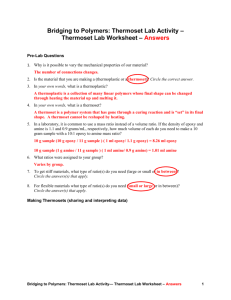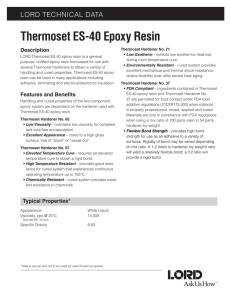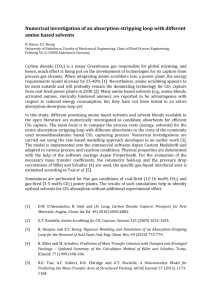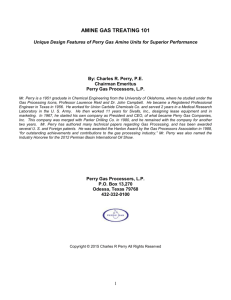Thermoset Lab Worksheet
advertisement
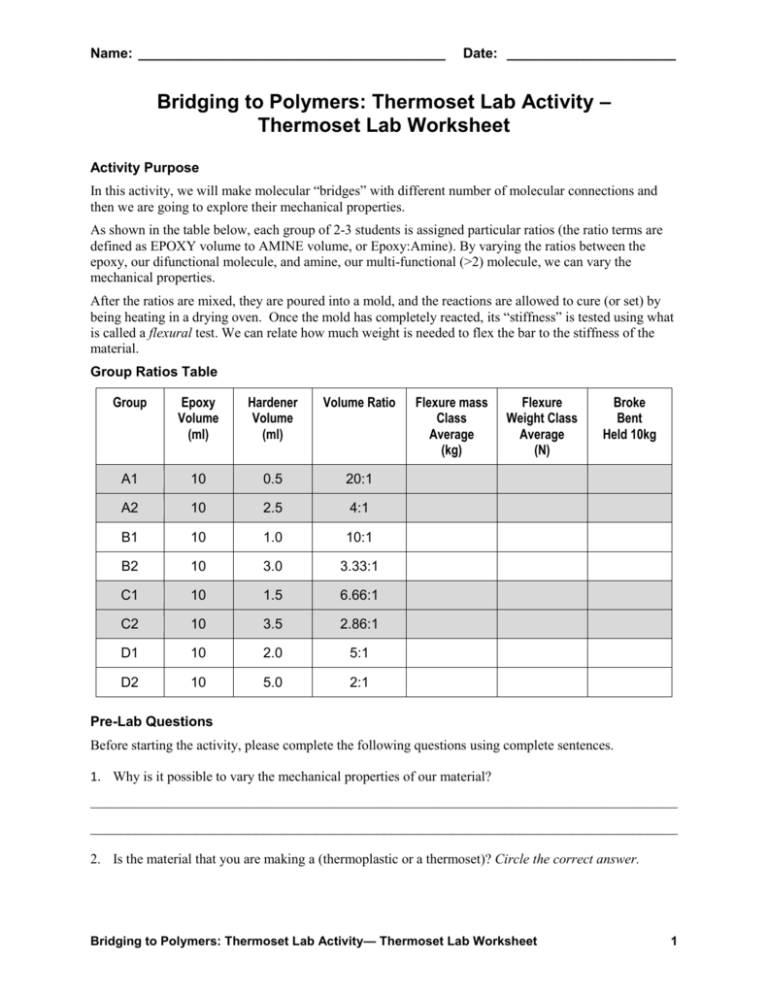
Name: ________________________________________ Date: ______________________ Bridging to Polymers: Thermoset Lab Activity – Thermoset Lab Worksheet Activity Purpose In this activity, we will make molecular “bridges” with different number of molecular connections and then we are going to explore their mechanical properties. As shown in the table below, each group of 2-3 students is assigned particular ratios (the ratio terms are defined as EPOXY volume to AMINE volume, or Epoxy:Amine). By varying the ratios between the epoxy, our difunctional molecule, and amine, our multi-functional (>2) molecule, we can vary the mechanical properties. After the ratios are mixed, they are poured into a mold, and the reactions are allowed to cure (or set) by being heating in a drying oven. Once the mold has completely reacted, its “stiffness” is tested using what is called a flexural test. We can relate how much weight is needed to flex the bar to the stiffness of the material. Group Ratios Table Group Epoxy Volume (ml) Hardener Volume (ml) Volume Ratio A1 10 0.5 20:1 A2 10 2.5 4:1 B1 10 1.0 10:1 B2 10 3.0 3.33:1 C1 10 1.5 6.66:1 C2 10 3.5 2.86:1 D1 10 2.0 5:1 D2 10 5.0 2:1 Flexure mass Class Average (kg) Flexure Weight Class Average (N) Broke Bent Held 10kg Pre-Lab Questions Before starting the activity, please complete the following questions using complete sentences. 1. Why is it possible to vary the mechanical properties of our material? ______________________________________________________________________________ ______________________________________________________________________________ 2. Is the material that you are making a (thermoplastic or a thermoset)? Circle the correct answer. Bridging to Polymers: Thermoset Lab Activity— Thermoset Lab Worksheet 1 3. In your own words, what is a thermoplastic? ______________________________________________________________________________ ______________________________________________________________________________ ______________________________________________________________________________ ______________________________________________________________________________ 4. In your own words, what is a thermoset? ______________________________________________________________________________ ______________________________________________________________________________ ______________________________________________________________________________ ______________________________________________________________________________ 5. In a laboratory, it is common to use a mass ratio instead of a volume ratio. If the density of epoxy and amine is 1.1 and 0.9 grams/mL, respectively, how much volume of each do you need to make a 10 gram sample with a 10:1 epoxy to amine mass ratio? ______________________________________________________________________________ 6. What ratios were assigned to your group? ______________________________________________________________________________ ______________________________________________________________________________ 7. To get stiff materials, what type of ratio(s) do you need (large or small or in between)? Circle the answers(s) that apply. 8. For flexible materials what type of ratio(s) do you need (small or large or in between)? Circle the answer(s) that apply. Making Thermosets (sharing and interpreting data) Use the average data of other groups during all the periods testing during the day to fill out the final column of the data table. On the graph on the next page, please plot the flexure weight (N) versus the amount of amine in the system (mL). Be sure to put units on axes (.5 increments), as well as label the axes. Bridging to Polymers: Thermoset Lab Activity— Thermoset Lab Worksheet 2 Post-Lab Questions Please complete the following questions using complete sentences. 1. Which ratio(s) of amine hardener is/are the stiffest? ________________ 2. Which ratio(s) of amine hardener is/are the softest? ________________ 3. What can you conclude about the amine hardener or what is the general trend between mL versus flexure weight (N)? ______________________________________________________________________________ ______________________________________________________________________________ ______________________________________________________________________________ 4. Why does it follow that trend? ______________________________________________________________________________ ______________________________________________________________________________ ______________________________________________________________________________ 5. Think back to the bridge analogy, why is there a difference in strength between ratios? ______________________________________________________________________________ ______________________________________________________________________________ ______________________________________________________________________________ Bridging to Polymers: Thermoset Lab Activity— Thermoset Lab Worksheet 3
